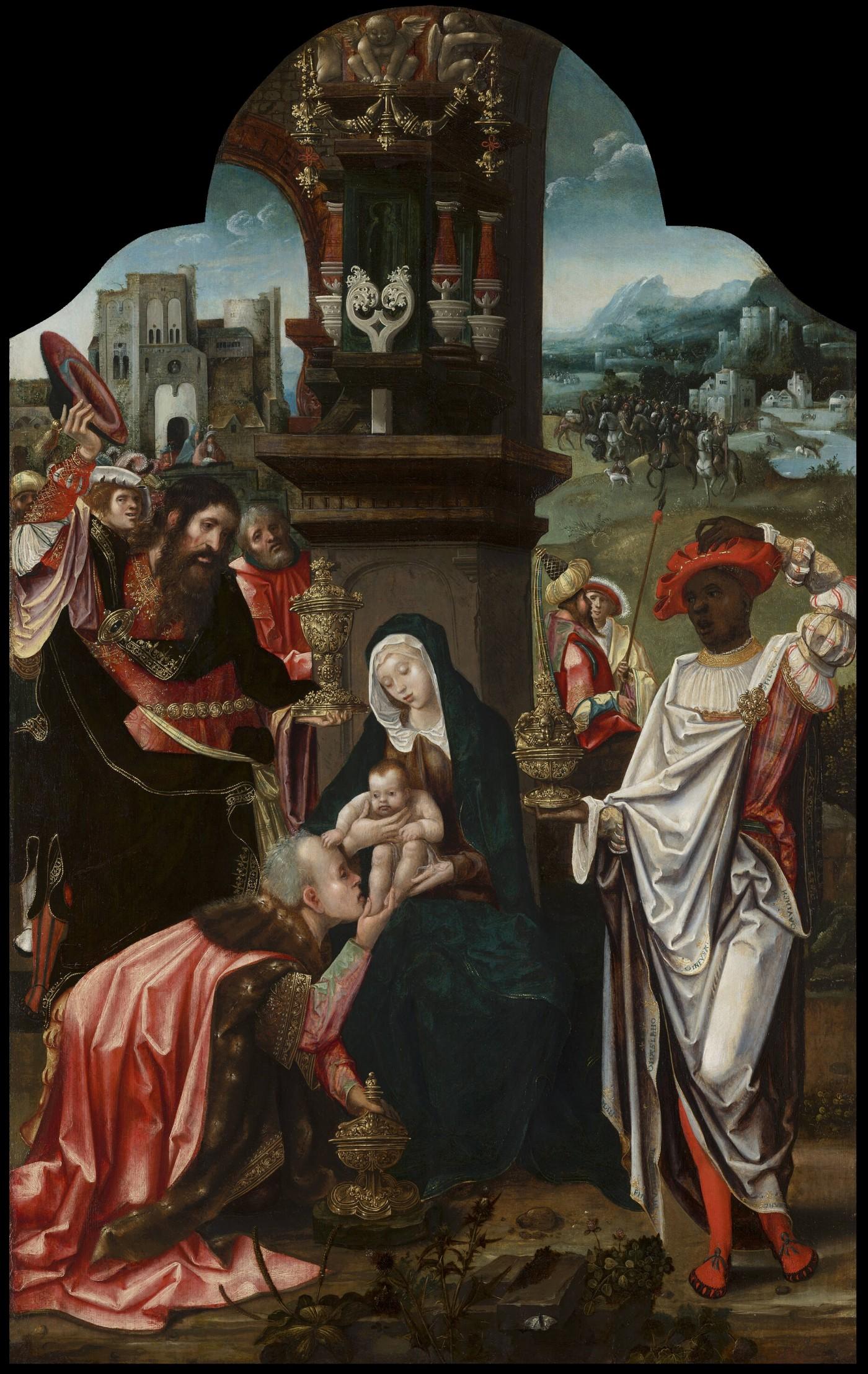Antwerp | Active ca. 1505-1530
The Adoration of the Magi
Oil on panel
H. 93 cm. | W. 58,5 cm.
PROVENANCE
Private collection | The Netherlands
REFERENCE LITERATURE
Hoffmann, G. (2005). ‘The Workshop of Adrian van Overbeck’. In: Een kwarteeuw Antwerpse schilderkunst herontdekt 1500-1530. Schoten: BAI, pp. 207-237;
Brink, P. van den (2005). ‘The artist at work: the crucial role of drawings in early sixteenth-century Antwerp workshops’. In: Jaarboek Koninklijk Museum voor Schone Kunsten Antwerpen. Theme of issue: Antwerp Mannerists. Antwerp: Royal Museum Annual, pp. 159-231
CATALOGUE NOTE
We are grateful to drs Peter van den Brink, director of the Suermondt-Ludwig Museum, Aachen, for endorsing the authorship of Adriaen van Overbeke
Adriaen van Overbeke belongs to the group of painters known as the Antwerp Mannerists, who worked roughly between 1505 and 1530. The majority of the artists within this group remains anonymous. Van Overbeke is one of the few masters who’s identity is known. In 1508 he was mentioned for the first time as a ‘vrijmeester’ in the records of the Antwerp Guild of Saint Luke.
The present Adoration of the Magi is the earliest known work of Adriaen van Overbeke, painted entirely by his own hand and demonstrating his the notable artistically abilities. During the second decade of the 16th century and onwards, Van Overbeke’s workshop was very prolific employed an increasing number of assistants. The output of the workshop consists mainly of religious paintings and altarpieces. In 1513 Van Overbeke signed a contract for an altar dedicated to St Anna for the Propsteikirche in Kempen in the Lower Rhine, which at present still remains in situ. This Altarpiece of St.Anne, like many works dating to the second decade of the 16th century, was mainly finished by workshop assistants. Only the under drawings were executed by Adriaen van Overbeke himself. In 1529 he signed a contract in Kempen again for the construction of a – now lost – altar dedicated to St. Joseph. This is the last year that Van Overbeke is mentioned in archival documents, marking the end of the period of activity of himself and his workshop. The present Adoration counts among the finest works executed by Adriaen van Overbeke and forms a rare and important example of the Antwerp Mannerism.
The theme of the Adoration was favoured amongst the Antwerp Mannerists of the early sixteenth century. Due to the presence of the three Magi, the artist could depict the flamboyant attire of three rich exotic men. This is expressed in the architecture, clothing and composition of Adriaen van Overbeke’s interpretation of the theme. The scene occurs at the foot of a richly decorated pillar, in front of which the Virgin and Christ are depicted. The Virgin is seated on a chair or throne that is entirely obscured by her dark blue cloak with a golden trimming on the hem. Her hair is covered by the hood of her cloak and a white veil. She holds the Christ Child in her arms, while he leans forward to delicately touch the head of one of the Magi who bows before him. The three Magi are wearing luxurious clothes, decorated with gold-thread, gemstones, jewels and fur. Their garments are theatrical, rather than true to the fashion of the sixteenth century. Balthasar and Caspar extend their gifts to Christ, while Melchior places his gift at the feet of the Virgin as he kisses Christ’s feet. Directly behind the Virgin, the pillar serves as a division between the main scene in the foreground and the scenery in the background. The latter is filled with the entourage of the three Magi. They appear to be as flamboyantly dressed as the Magi themselves. Further back, on the left side of the pillar, a castle is depicted, with three people looking from a parapet. On the right side of the pillar, a vast landscape is shown with castles, houses, and a large group of people on horseback and with camels approaching.

